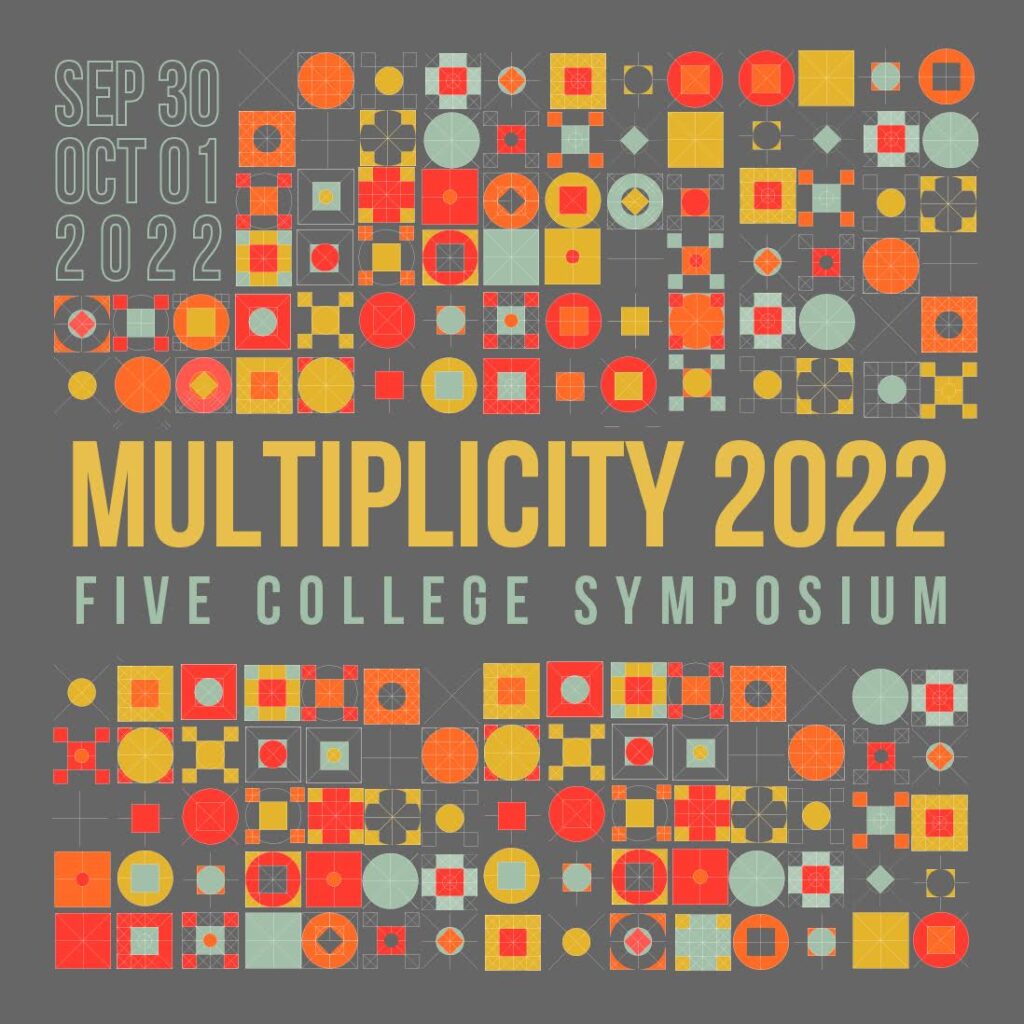
A FIVE COLLEGE SYMPOSIUM, CO-CONVENED BY PARI RIAHI, LAURE KATSAROS AND MICHAEL T. DAVIS
UNIVERSITY OF MASSACHUSETTS, AMHERST, WITH A LIVE BROADCAST, SEPTEMBER 30 AND OCTOBER 1, 2022
“Multiplicity” investigates the forces that generate uncertainty and change in contemporary architecture by studying the vectors of agency, constraint, and freedom. This ongoing theoretical investigation of contemporary architecture unfolds in three acts: “Exactitude” was held virtually in October 2020, “Multiplicity” is taking place in 2022, and “Quickness” is projected for September 2024. By bringing together scholars, theorists, and architects, we seek to invigorate a conversation around the conditions of architecture today and to imagine its future trajectories.
Inspired by Italo Calvino’s Six Memos for the Next Millennium, the three symposia are autonomous yet interrelated. With “Exactitude,” participants examined the ever-increasing demand for precision in architecture at a time when the parameters of the profession are shifting. With “Multiplicity,” the conference situates architecture within a broader framework, examining how it interacts with complex climatic, economic, and demographic crises at the scale of the city, the territory, and the globe. With “Quickness,” the conference will address the rates and cycles of architectural production, from early conception to realization, scrutinizing the speed and duration of translating ideas into artifacts through digital and material means.
To study this vast spectrum, the organizers explore the following themes with contributors:
Overlapping Spheres: Environmental Humanities and the Built Environment
Lucia Allais, Aleksandra Jaeschke, Sanford Kwinter, Jennifer Mack
As we witness our global habitat being engulfed in recurrent societal and climatic crises, architecture is situated in a larger network of knowledge and expertise. The theme reflects on how different disciplines in the humanities and the social sciences influence and enrich architecture.
Intersecting Visions: The New, the Preserved, and the Adapted Urban(s)
Kristi Cheramie, Rahul Mehrotra, Charles Waldheim
With our environment’s continuous reconfigurations, we face choices in making, preserving, or adapting our buildings, cities, and infrastructure. These choices have implications extending beyond the realm of architecture that affect our collective lives. The theme questions how to strike a balance between the local and the global, the individual and collective.
Novel Methodologies and Processes: Theories for an Expanded Practice
Ana Miljački, Jesse Reiser, Jenny Sabin
To be simultaneously aware of our historical roots and engaged with new technologies is no simple task. As architecture aspires to be engaged and innovative, it is critical to maintain a dialogue between these two imperatives. The organizers are interested in processes and methodologies that are instrumental in keeping that fine balance.
Affirming Forces: Race, Ethnicity, and Power
Esra Akcan, David Theodore, Charles Davis II
Architecture’s constant entanglement in structures of power can channel change in meaningful ways. Taking positions and activating architecture’s power to bring change create new models for practice. With architecture’s potential to imagine better modes of inhabitation, organizers ask how this enormous potential may contribute to a more equitable, just, and harmonious society.
The symposium is free and open to the public. Registration for the live broadcast can be found here.
The revised and expanded essays in each symposium will appear in an edited volume by UMass Press.
The first of the series: Exactitude: On Precision and Play in Contemporary Architecture (UMass Press,2022) is already out.
